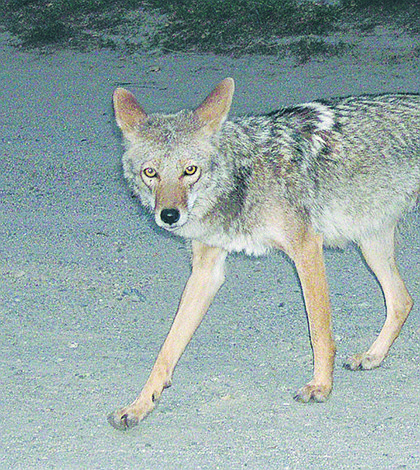- April 25, 2024
-
-
Loading

Loading

WINTER GARDEN — A coyote near Lake Apopka in the Garden Heights neighborhood of Winter Garden has attacked at least three pets in the area, according to residents.
“The house behind me, there’s a little forest that goes all the way back,” resident Jose Santiago said. “(A coyote) could feed and get water from there.”
It seems the coyote is feeding on some cats that hang around the sidewalks of the neighborhood, Santiago said.
“These people across the street from us have two cats,” he said. “After one night, my cat was lost and the coyote was out on the porch. They saw him walking down the sidewalk and got a good look at it.”
Witnesses said the coyote looked like a big dog, at around 60 pounds, and had been present around 6 a.m. Wildlife data suggest coyotes rarely exceed 40 pounds.
“They were really close to it,” Santiago said. “They were getting up and getting ready to go to work when they saw it close to the porch.”
Coyotes are not native to Florida but to the Southwestern United States and other arid regions in South and Central America, according to the Florida Fish and Wildlife Conservation Commission (FWC), which held a November meeting in Orange County about coyotes.
Coyotes have expanded from 18 of 67 state counties in 1981 to 48 counties in 1988 and all 67 counties today. They have also expanded into every state but Hawaii.
“I went to animal control myself, looking for my cat, because I never heard of a coyote here before,” Santiago said. “It’s a fluffy, white cat — and then another disappeared. The last person that saw the coyote has been going around warning the people.”
Santiago did learn of coyotes in the Sanford area a couple of months ago, and he knows they are aggressively territorial about the areas in which they reside.
“He (the coyote) is staying in his spot, this neighborhood,” Santiago said. “They are born and die around the same area. With the cats around and raccoons and possums, there’s an abundance of food for them.”
That is part of why humans should not feed coyotes, which keep their distance from humans out of a natural fear, according to the FWC. Leaving crawl spaces unclosed or feeding them also can increase populations, and eliminating them only creates incentives for nearby populations to increase litter sizes and move in.
Coyotes contribute to ecosystems by controlling populations of unwanted smaller predators, such as raccoons and even certain insects, but they also prey upon endangered species and compete with native species, such as bobcats and the endangered Florida panther. And even though they are just another species trying to make a home of the world, unfortunate situations such as Santiago’s can arise.
If anyone experiences coyote problems, contact FWC’s Wildlife Alert at (888) 404-3922.
To scare away coyotes that approach too closely, Florida Wildlife Commission officials say people should wave their arms, shout and throw stones in their general direction. Continue to make noise at the coyote until it leaves, so it does not learn to wait for the noise to stop.
Do not run away or initiate a close encounter. Hurting a coyote makes it likelier to defend itself.
In areas with regular coyote encounters, pet owners should try to avoid walks from dusk to dawn and carry a noisemaker, even a large stick or club to tap.
Contact Zak Kerr at [email protected].